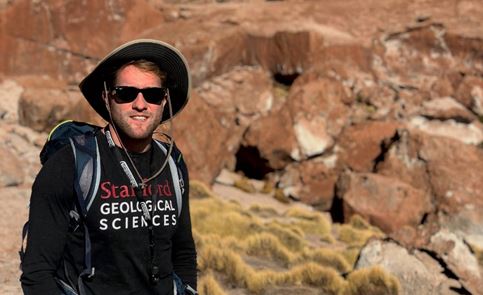
The origin of the Thacker Pass lithium deposit, the largest known lithium resource in the United States
Dr. Thomas R. Benson, Lead Global Exploration Geologist, Lithium Americas Corporation
The Thacker Pass lithium deposit in Humboldt County, Nevada is the largest known lithium resource in the United States and the largest known and highest-grade sedimentary (clay) resource in the world (8.3 Mt LCE; Ehsani et al., 2018). The deposit occurs as a thick (up to 1 km) package of sedimentary strata deposited within the cauldron of the 16.3 Ma McDermitt Caldera in northern Nevada. The presence of elevated Li (up to ~9,000 ppm Li) within the caldera lake sediments of the McDermitt Caldera has been known since the late 1970’s, though whether the deposit formed via hydrothermal or diagenetic processes is still debated (Rytuba and Glanzman, 1979; Morissette, 2012; Benson et al., 2017; Castor and Henry, 2020). This talk presents a new model for the genesis of the Thacker Pass deposit based on work done in collaboration with researchers at the University of Nevada-Reno (Ingraffia et al., 2020) and new research by Lithium Americas Corporation on the physical volcanology, sedimentology, and trace element geochemistry of the deposit. This updated model suggests that there are three main sources of Li for the Thacker Pass deposit. Source 1: leaching of outflow Li-enriched tuff by meteoric water and deposition in the caldera basin; Source 2: diagenetic alteration of tuffaceous sediment to Li-bearing clay; and Source 3: prolonged degassing and devitrification of the thick underlying rheomorphosed intracaldera McDermitt (Long Ridge) Tuff. Sources 1 and 2 are phenomena observed in other Li clay deposits located in southern Nevada, though these deposits are significantly lower in size and grade than the Thacker Pass deposit (e.g., the 1.3 Mt LCE resource averaging ~1,600 ppm at the Rhyolite Ridge deposit). The additional source of Li that makes Thacker Pass uniquely enriched in Li and voluminous (8.3 Mt LCE averaging ~2,900 ppm) is Source 3, the devitrification of the thick (> 1 km) rheomorphosed lithium-rich intracaldera tuff underlying the caldera lake sediments. Fumarolic degassing of this tuff resulted in the release of a considerable mass of Li and other metals (Cs, Rb, Mo) and ligands (S, Cl) from the tuff into a shallow lacustrine environment at the caldera floor. The Li mobilized from this process, in aggregate with the Li from Sources 1 and 2, became incorporated in the structure of authigenic clays forming at the bottom of the caldera lake. As sediments accumulated within the basin, diagenetic alteration of the clays and minor hydrothermal systems likely overprinted the original sediment mineralogy and remobilized the Li into different sedimentary layers and structural sites within clay minerals. Because the caldera crater served as a closed hydrologic basin during degassing, sediment deposition, diagenesis, alteration, and weathering, the large mass of Li added to the system from both sources was unable to escape the McDermitt Caldera margins and remains in the sediments to the present day.
Tom Benson is the Lead Global Exploration Geologist at Lithium Americas Corporation. He received his Ph.D. in volcanology from Stanford University in 2017 for his research on global lithium resources associated with large caldera-forming eruptions. His research has gained international acclaim, appearing in Nature, The Smithsonian, NPR, and Wired, among other media outlets. Before this, Dr. Benson researched geothermal systems as an undergraduate at Harvard University, Research Associate at the Massachusetts Institute of Technology, and Fulbright Scholar in Iceland. Before joining Lithium Americas Corporation full-time in 2018, Dr. Benson worked as Adjunct Assistant Professor at New York University, Research Associate at the American Museum of Natural History, Visiting Scholar at Columbia University, and Consulting Geologist for Lithium Americas Corporation. As Lead Global Exploration Geologist at Lithium Americas, Dr. Benson leads exploration efforts across the world and helps guide exploration programs at the Cauchari-Olaroz and Thacker Pass projects. He also is actively engaged in peer-reviewed research on the origins of sedimentary, brine, and pegmatite lithium deposits.
